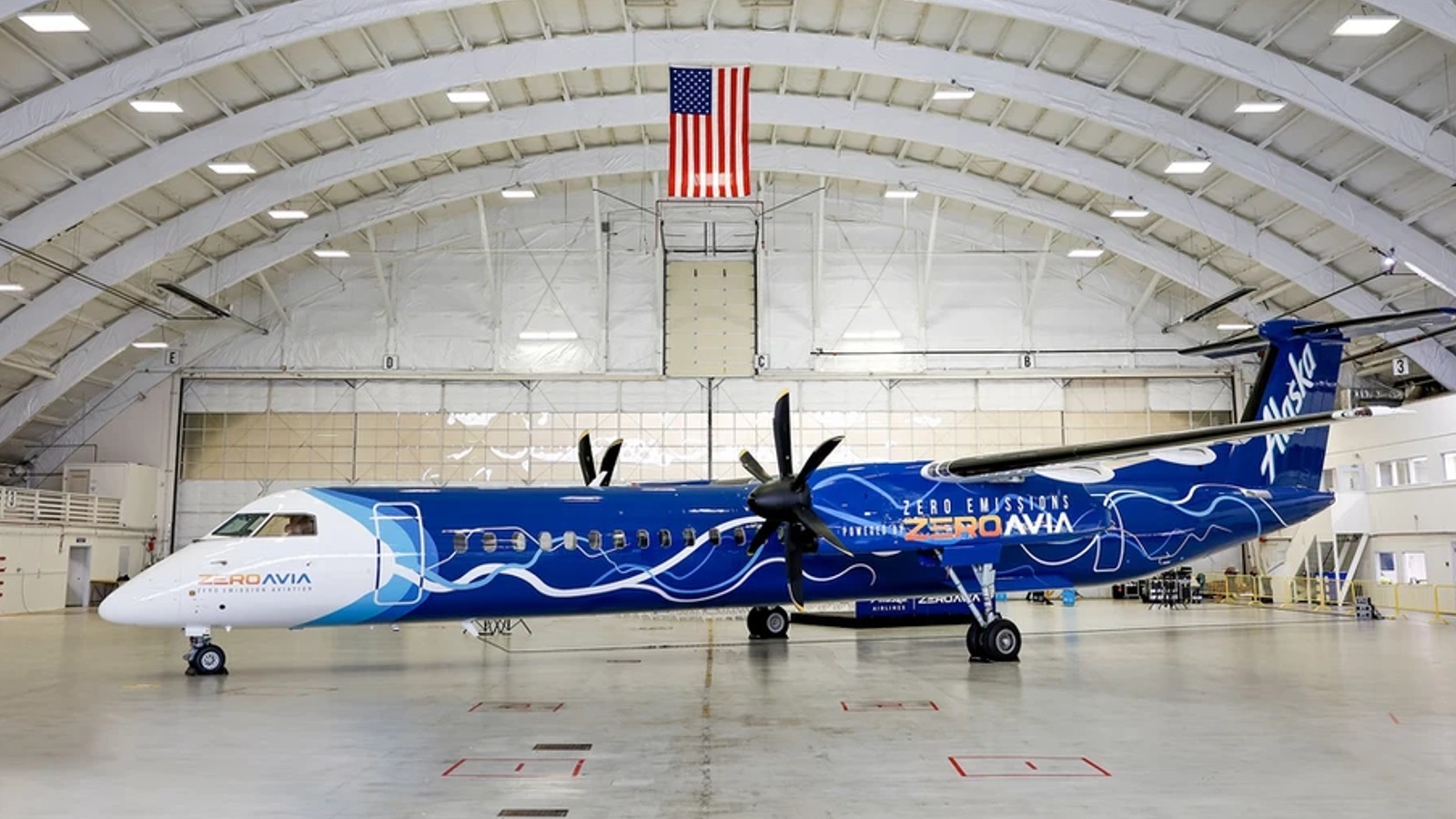
Alaska Airlines is the latest player to enter hydrogen-powered aviation. In May, Alaska Airlines announced a partnership with ZeroAvia aimed at ultimately revolutionizing regional air traffic networks with hydrogen-fueled aircraft. While the proposed zero-emissions ship is still conceptual at this point, the feasibility of hydrogen-fueled flight could turn the air travel paradigm on its head.
In March 2023, Airplane powered by Universal Hydrogen’s The fuel cell design made history with the largest ship to sail primarily on hydrogen fuel. Similarly, Airbus aims to have commercial hydrogen fuel cell aircraft by 2035. The company launched the Project Zero in 2022 in an effort to introduce a viable hydrogen-powered engine platform by 2025.
The Alaska Airlines project is set to bring its largest zero-emission aircraft yet into the fold. In coordination with its partner in this cutting edge technology, the duo is developing a propulsion system – HyperCore from ZeroAvia – that will serve as a key stepping stone towards zero emissions air travel across the industry.
“Alaska Airlines has outlined a five-part flight to achieve net zero carbon emissions over the long term, but we can’t get there on our own,” said Ben Minicucci, CEO of Alaska Airlines. “New technologies are required to make this future possible.”
ZeroAvia’s contribution to the vision is significant, with its own record for the largest aircraft in the world to fly under the power of a zero-emissions energy source again in 2020.
Hydrogen propulsion provides efficiency and other improvements
The new propulsion system in the Bombardier Q400 is based on a new fuel cell assembly that is nearly five times more powerful than anything demonstrated to date in an aircraft. ZeroAvia has already conducted extensive ground testing of the 1.8MW HyperCore system, along with the gearbox and propeller that are standard among Q400 (aka Dash 8-400) aircraft.
Not only hydrogen fuel A great way to reduce aircraft pollution, many of the electric propulsion systems that power those aircraft operate with little noise. As a result, it will not only affect the atmosphere, but it will reinvigorate communities that have long suffered from the effects of noise pollution under and around airports around the world. Studies show that noise pollution from airports is a major trigger for stress, but it may also lead to an increased risk of cardiovascular disease among residents who live in nearby areas.
Hydrogen fuel cells can play a major role in eliminating harmful emissions
Since the hydrogen-propelled electric engines in these designs reduce carbon emissions, retrofitting many aircraft with this type of propulsion system would go a long way in reducing the harmful emissions currently ravaging the atmosphere. Existing test systems have so far focused mainly on smaller aircraft, but even if manufacturers transition small cargo and regional airline ships to this new fuel system, the results will be impressive.
It is estimated that a third of all aviation emissions come from flights of less than 932 miles (1,500 km), putting short flights of all kinds at the forefront of efforts to reduce carbon emissions. Large commercial aircraft will certainly become the target of major overhaul in the future, but prioritizing small aircraft could provide a huge improvement in the environmental impact of air travel.
by switching to Hydrogen fuel cells on board By participating in the regional flight paths, airlines will be taking a huge step in the right direction when it comes to making a difference in the fight against climate change. Likewise, companies like Amazon and UPS operate complex networks of air freight routes that could benefit greatly from switching to these new payment systems. Even if large-scale commercial travel to hydrogen remains far into the future, hydrogen fuel cells will almost certainly change air travel for the better.
ليست هناك تعليقات:
إرسال تعليق